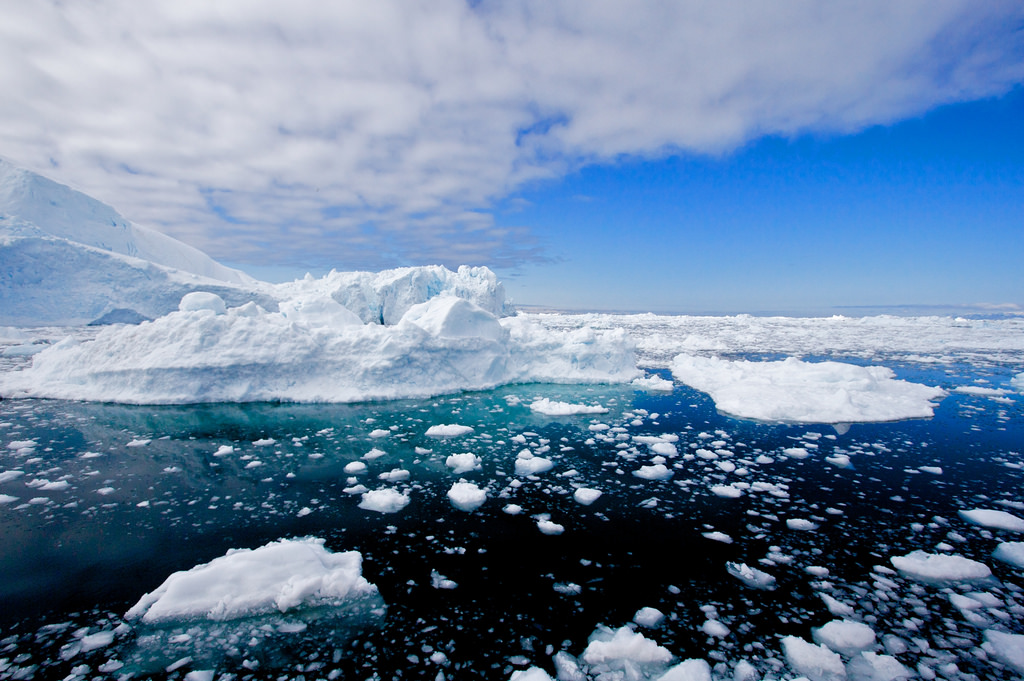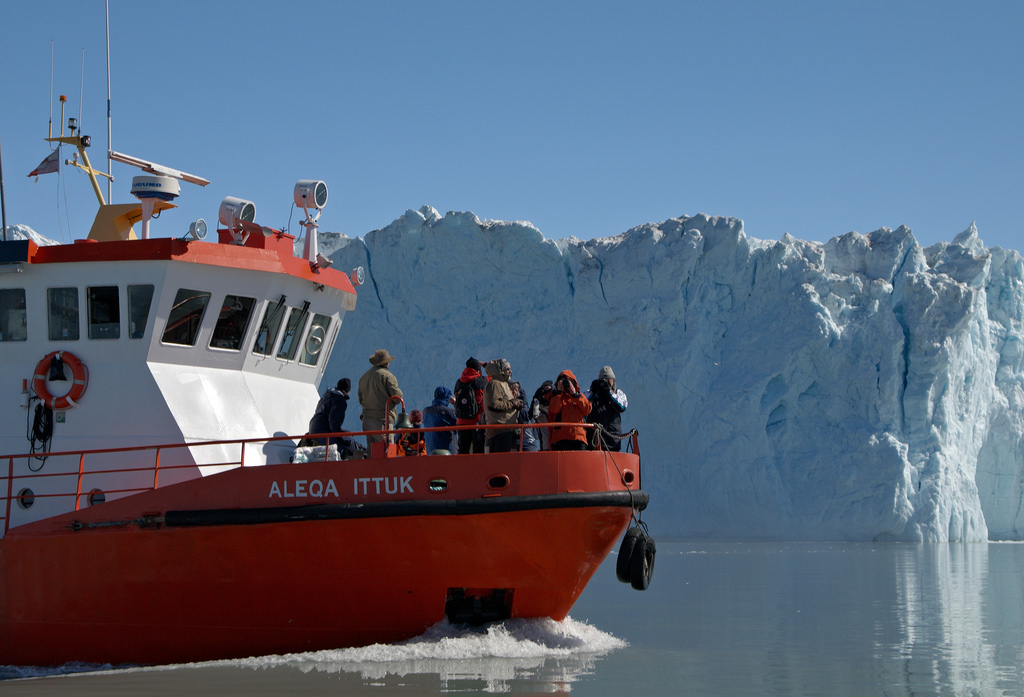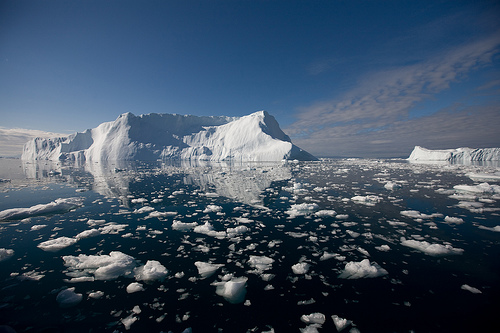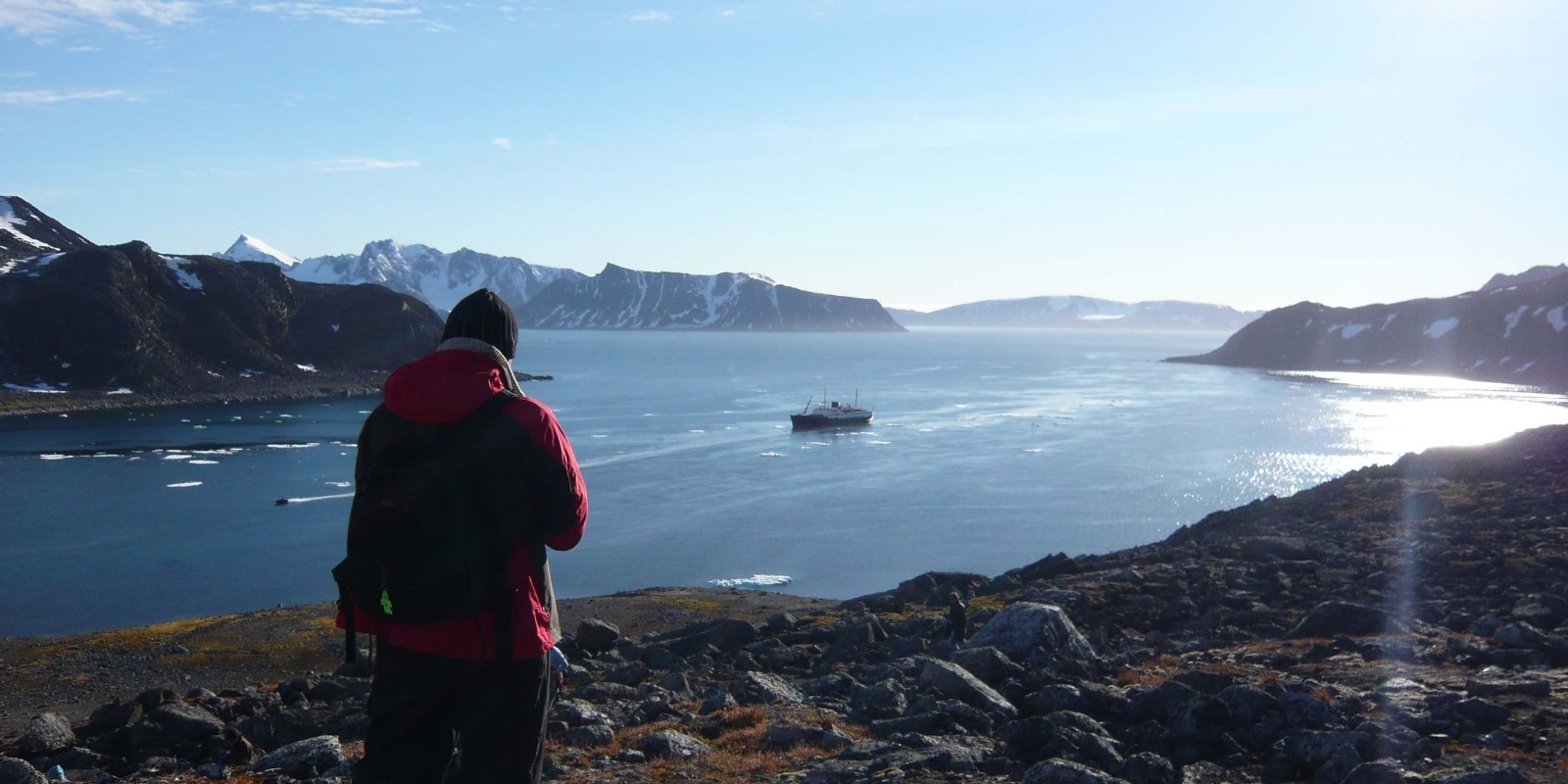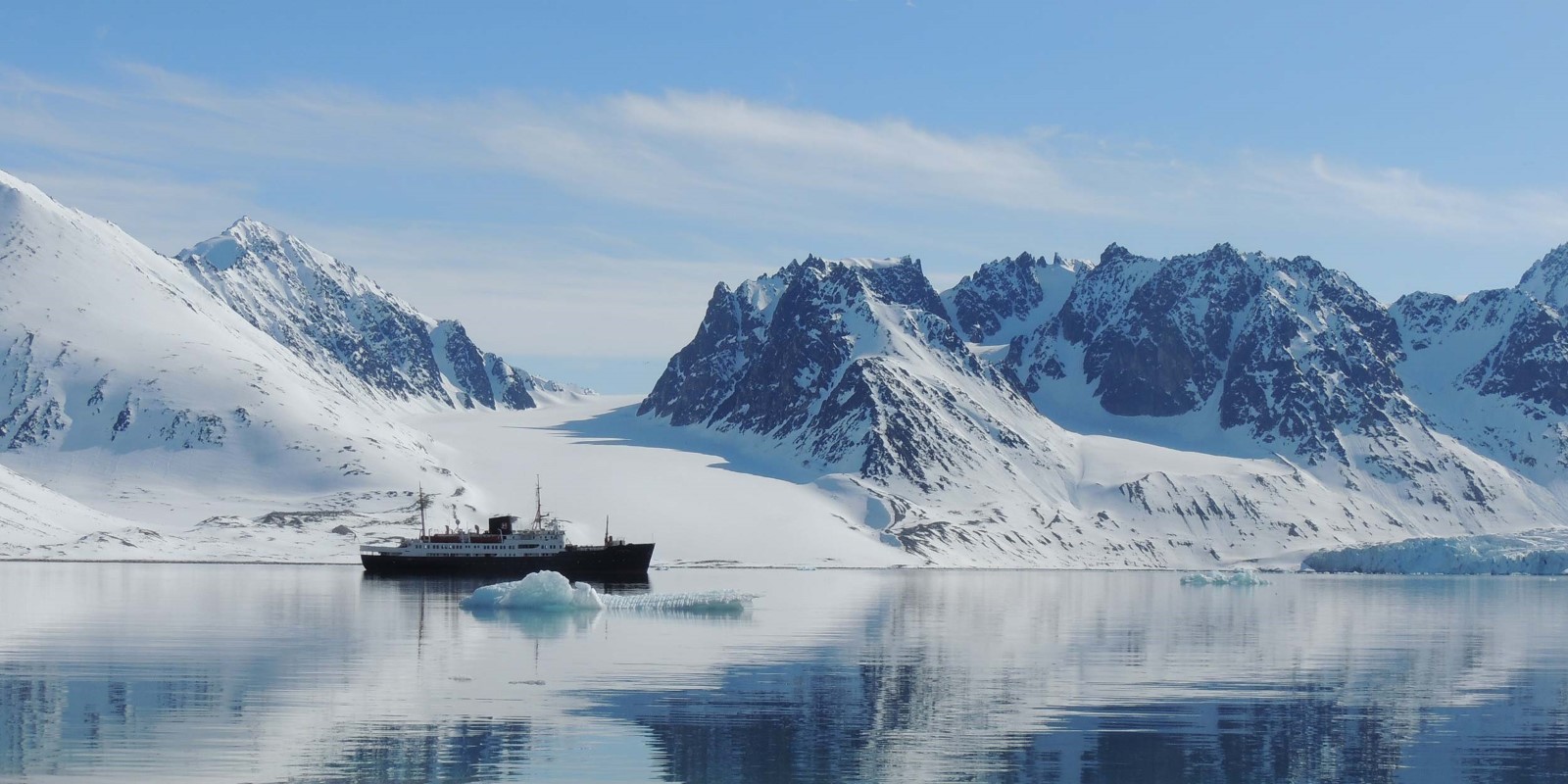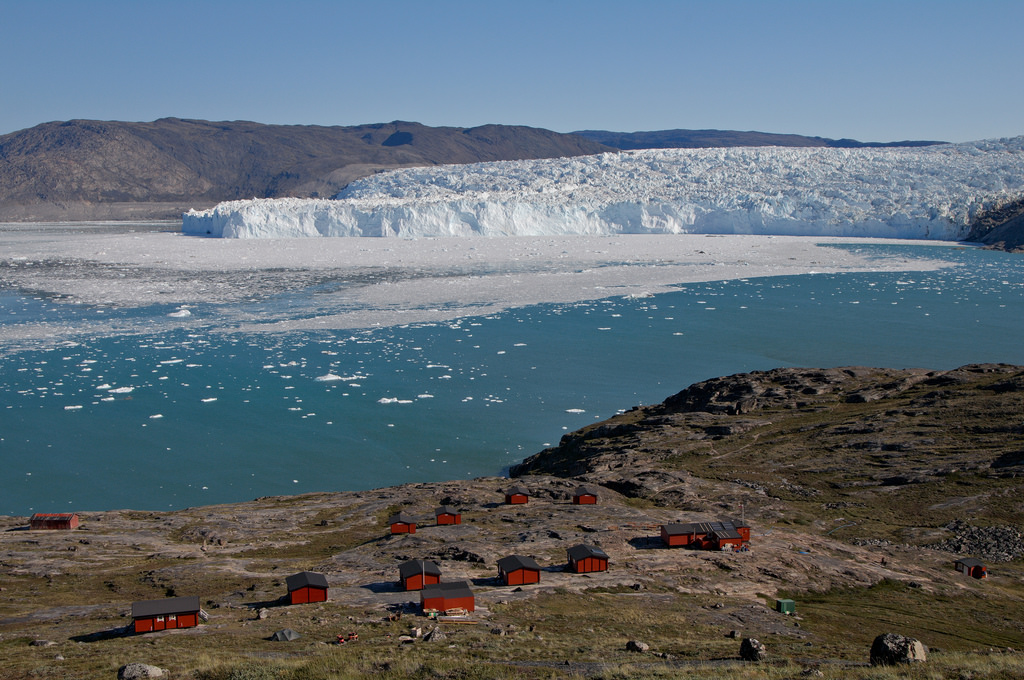Greenland Solar Eclipse from Reykjavik
Experience one of nature’s most stunning events in a truly remarkable location. Join us to witness the Solar Eclipse 2026b in the wild expanse of East Greenland.
On August 12, 2026, a total solar eclipse will traverse the mountainous regions of Northeast Greenland. At 4:37 p.m., the moon’s shadow will touch down on the dramatic and remote Blosseville Coast in East Greenland. Ocean Albatros will be anchored near the shore at the center of the total eclipse. Protected from ocean winds, our tranquil landing beach will offer an unobstructed view of the western sky, where totality will endure for 2 minutes and 17 seconds.
The unique solar eclipse will start our expedition cruise from East to West Greenland. Departing from the vibrant Icelandic capital of Reykjavík, we will head directly to the eclipse zone to experience this natural marvel amidst breathtaking scenery. After this event, we will sail south along Greenland’s eastern coast, observing glaciers cascading from the snow-covered peaks of the Watkins Mountains, immersing ourselves in the unique culture of East Greenland in Tasiilaq, and marveling at the stunning fjords and glaciers of Skjoldungen. Our journey will then take us through the majestic Prins Christiansund Strait, a glacier-lined waterway that separates Kap Farvel (Greenland’s southernmost point) from the mainland. We will further explore the deep fjords of South Greenland to visit the ancient site of Erik the Red’s homestead. The verdant pastures and rolling hills of South Greenland illustrate why the Norse settlers named this island as they did and chose to settle in this lush paradise.
Following the breathtaking coastline of the world’s largest island, we will stop at Nuuk, one of the smallest capital cities globally. Nuuk retains a strong Greenlandic character, with petite traditional wooden homes nestled among modern glass structures, while locals purchase seal and whale meat at the city market. We will set our course from Nuuk for Evighedsfjord, the “Fjord of Eternity,” where multiple glaciers flow from rugged peaks into the deep fjord below. After twelve days of this thrilling and unforgettable eclipse cruise, we will disembark in Kangerlussuaq, prepared for our journey back home.
Our expedition vessel, the Ocean Albatros, is an innovative and stylish small ship that merges exceptional comfort with cutting-edge technology, ensuring unique stability in choppy waters. First-class dining and expert presentations on astronomy, zoology, geology, and Inuit culture will enrich this extraordinary voyage to experience totality on Earth’s largest island.
Tour Itinerary
The rock-like columns of Hallgrímskirkja Church loom over the city of Reykjavik, a hip Scandinavian capital which needs little introduction. With new Nordic cuisine, excellent shopping, fantastic excursions and an easy relaxed vibe, Reykjavik is one of Scandinavia's most welcoming and exciting cities. Explore the city's world class (and often very quirky) museums, shop for snuggly local sweaters, or simply watch this bustling city in action on a cozy cafe terrace.
MV Ocean Albatros awaits embarkation in the city's bustling harbour, with comfortable staterooms ready to welcome our guests. After our mandatory safety briefings and lifeboat drill, Ocean Albatros will sail out of Reykjavík and chart a course for the wild east coast of Greenland.
Dinner
The Denmark Strait is the narrow section of the North Atlantic Ocean separating Iceland from Greenland. This body of water is among the most productive in the world, where the cold polar East Greenland Current collides with the warm northbound Gulf Stream. These nutrient-rich waters support vast stocks of fish, and in turn the humans, seals, whales and seabirds which rely on them. As Ocean Albatros sails across the Denmark Strait, our eclipse experts onboard will take careful note of weather and ice conditions at the eclipse location and instruct our guests on procedures to safely view and photograph the eclipse. As we approach Greenland, our onboard team will also provide information on the ecology, geology and wildlife of the area, as well as ensuring our guests are informed on important topics such as Zodiac operations and polar bear safety. In other words, getting prepared for the adventure to come!
Breakfast / Lunch / Dinner
During the early hours of the day, we approach the massive rock walls of the Blosseville Coast. A hundred years ago this coastline was feared by sailors due to the almost permanent sea ice, which even in summer could trap and crush unsuspecting ships. However, warmer temperatures during the last decades and huge advances in marine technology mean this forbidding coast and its sheltered landings in the dramatic fjords can now be accessed by certain ice-strengthened vessels such as ours.
For this important day, Albatros Expeditions have carefully researched the best possible viewing location – a location as close to eclipse centre line as possible, with easy Zodiac access, views unobstructed by mountains to the southwest and likely to have clear skies. Ocean Albatros will drop anchor close to the shore around noon. Our expedition staff will scout the area for wildlife, and after lunch all guests will get ashore by Zodiac in good time to set up their equipment and view this natural wonder.
The shadow of the moon moves toward us from north Greenland at a speed of 4,000 kilometre per hour. The partial eclipse begins at 16:37 local time (the same as UTC and Reykjavík time), and the totality begins at 17:37. The sun at maximum eclipse will be in the southwestern sky, unobstructed by any mountains at the mouth of our little fjord. At 17:40 the first rays slip past the lunar disk to create the legendary “Diamond Ring” – and then the totality is over. The spectacle ends around 18:33 when the last fringe of the moon leaves the solar disk, and the shadow continues south toward the northern coast of Spain. We will pack up our equipment, tripods, and other belongings and return to the ship, where a gala dinner has been prepared for this very special day!
Eclipse photography - a word of advice
Much has been written about how to take good pictures during a solar eclipse. The most important phrase in almost all these descriptions is: DON’T! It is extremely difficult to get good pictures, especially during totality, and it requires very advanced equipment and knowledge. If you do not have this, you risk missing the most important thing, namely experiencing the special and unreal atmosphere that a total solar eclipse gives. Instead, use the short span of the eclipse to observe the effect of the fast-changing light on the landscape. And when turning your eyes towards the sun, always wear the solar eclipse glasses provided to you by Albatros Expeditions.
Breakfast / Lunch / Dinner
Captain and his officers will steer Ocean Albatros south along Blosseville, the most dramatic coast outside of Antarctica. The tall and dark rock walls have their origin in the opening of the Atlantic Ocean, when Norway and Greenland separated, and thousands of cubic kilometres of lava flowed up through Earth’s crust. The dramatic layers of black rock bear testament to countless volcanic eruptions in the region approximately 50 million years ago. A magnet for geologists from around the world, this fascinating region was first surveyed by legendary Danish explorer Ejnar Mikkelsen.
If ice and weather conditions allow, the Expedition Leader and Captain will try to arrange for a shore landing at the mouth of Kangerlussuaq, a typically descriptive Greenlandic name meaning “Big Fjord”. Despite the forbidding landscape and the brutal weather of the region, ancestors of today’s Inuit have lived in the region for thousands of years. A few abandoned Inuit settlements and expedition huts are scattered in this otherwise untouched and otherworldly landscape.
Breakfast / Lunch / Dinner
Proceeding along the coast, we soon arrive at Tasiilaq, the largest settlement in East Greenland. Unlike the west coast, which has had uninterrupted contact with Europe since the 1700s, the coast of East Greenland remained more or less uncontacted until around 1894, when a Danish trading post was established at Tasiilaq by Gustav Holm’s famous Skin Boat Expedition. The vast distances involved in Arctic travel meant that the people of East Greenland (Tunumiit) were isolated from their cousins to the west, and the language, traditions and culture of East Greenland therefore differ significantly to those in other parts of the country.
Ancient traditions are strong here. This region of Greenland was the home of the last Angakkuit (Shamans) of Greenland, and is the home of the tupilak - a monster fashioned from animal (and sometimes human) body parts and animated by the power of an Angakkuq to wreak havoc on enemies. Creating such a monster was dangerous, as it could be turned back by a more powerful magic user to attack its creator. The first Europeans were curious as to what these dark beasts looked like, and locals carved facsimiles in bone or horn, beginning one of Greenland's finest artistic traditions. The tupilaat made by artisans in Tasiilaq are considered among the best in the country.
Tasiilaq sits in a perfect natural harbour on Ammassalik Island (meaning 'the Place of Many Capelin'). While superficially similar to towns on the West Coast, the landscape here is much more rugged, the people fewer, and the sled dogs much more numerous. Tasiilaq offers excellent opportunities to explore, with excellent hiking routes such as the Flower Valley easily accessible from town. For those wishing to delve into Tunumiit culture, visit the museum, located in the city's old church, hear the city's exquisite choir perform in the modern church, or watch a drum dancer in traditional East Greenlandic costume perform a millennia-old spiritual tradition. For those wishing to indulge in some retail therapy, visit the Stunk Artist's Workshop, where skilled craftsmen create beautiful pieces from natural local materials.
Breakfast / Lunch / Dinner
Today's adventure begins as we sail into magnificent Skjoldungen, a staggeringly beautiful fjord on the southeastern coast of Greenland. The fjord is named for Skjold, an ancient Danish King of Norse legend, while the Greenlandic name, Saqqisikuik, references the sunny climate of the area. Various archaeological finds on the island which sits in the middle of the fjord suggests nomadic Inuit groups visited and stayed in the area in years gone by; more recently, settlers were brought from Tasiilaq to settle the island in the 1930s, but returned there thirty years later; some houses can still be seen on the southern side of the fjord. A small weather station was also operated on the island by the Allies during WWII.
Today uninhabited, Skjoldungen sits almost 300km from the nearest village, with Mother Nature its only ruler. Vast saw-toothed mountains lined with opalescent glaciers line the deep chilly waters of the fjord, which can freeze even in summer. At the head of the fjord lies the magnificent Thryms Glacier, a magnificent river of ice flowing down from the ice sheet. On the southern side of Thryms Glacier lies the sweeping U-shaped glacial valley of Dronning Maries Dal - a textbook example of a glacially-produced landscape. Join your expedition team for a walk on the flower-lined floor of this valley, and marvel at the stunning scenery. Ensure you are on the outer decks on our approach and departure from this magnificent fjord too: you will not be disappointed!
Breakfast / Lunch / Dinner
South of Skjoldungen lies Cape Farewell, which is renowned not only as Greenland's southernmost point, but also for its infamously challenging weather. With this in mind, we deliberately opt for a far more comfortable but also more spectacular route, cruising across to West Greenland via the inside passage of Prins Christian Sund. Known in Greenlandic by its typically descriptive name of Ikerasassuaq ('the Big Strait'), this 60 km long waterway reaches from the east coast to the settlement of Aappilattoq in West Greenland.
Prins Christian Sund is one of the most spectacular waterways anywhere on Earth. Kept free of ice year round by strong tidal currents, the strait is hemmed in on either side by mountains which rise straight out of the water some reaching over 2,000m in height. Large glaciers flow from the ice sheet into the sea on the northern side of the strait, while sapphire blue mountain glaciers loom over the water from the southern side, and vast icebergs stud the glassy waters.
By mid-afternoon we will visit the small village of Aappilattoq, which sits hunkered beneath the towering mountains at the end of Prins Christians Sund. The village is a world away from busy towns of West Greenland; life here moves at a slower pace, following the rhythms of the wind, waves and tides. Aappilattoq (meaning 'Red' in Greenlandic, referring to the stark granite bluffs above) offers excellent hiking opportunities, and the local choir is renowned throughout Greenland.
Breakfast / Lunch / Dinner
Tasermiut (meaning 'the Settlement by the Lake') is one of Greenland's best kept secrets. Extending northeastwards 75 km from the town of Nanortalik to the Ice Sheet, the fjord is lined by green, fertile side valleys and sheer granite walls reaching 2000 m above sea level. These rock walls are often compared to El Chalten in Argentina, or California's Yosemite, but in reality the sheer scale of these cliffs far exceeds both, and they are a lifetime goal for the world's most expert rock climbers. The Norse settlers called this waterway Ketil’s Fjord and build an Augustinian monastery in what is still called Klosterdalen (“Monastery Valley”). We will make a zodiac landing and a short easy hike to experience the fantastic landscape at the head of fjord - no climbing gear required!
Following the coast north, we reach the small island of Uunartoq, famous for its geothermal springs with year-round temperatures of 34-36 degrees centigrade. While the hot springs of Iceland are more famous, Uunartoq surely beats them all for sheer natural beauty; nowhere else in the world can you relax in perfectly hot water while icebergs float past in the sea nearby. In fact, many visitors use the frigid sea as the ideal cold plunge to enhance this natural spa! The Norse settlers knew this place as well, and remnants of a nunnery have been excavated on the island. We will make a landing on the island by Zodiac in the early evening and take turns to dip into the hot pool.
Breakfast / Lunch / Dinner
During the early morning we will cruise below the majestic mountains of Tunulliarfik Fjord towards the small village of Qassiarsuk. The fjords here are lined with lush green meadows and dotted with small sheep-farming settlements, of which Qassiarsuk is perhaps the best known.
While the modern village of Qassiarsuk was founded in 1924, the location has a fascinated and much longer history; it was here a thousand years ago that legendary Norse explorer, Eric the Red, settled after being banished from Iceland. Erik and his family set up a small farmstead in typical Norse style, naming new settlement Brattahlíð, “The Steep slope”. Erik himself kept fiercely to the Norse gods, but his wife Thjodhild was a Christian. Legend has it, she refused to join his bed until he built her a church, which he eventually did, constructing a tiny hut (Þjóðhildarkirkja) which was nevertheless the first church in the Americas.
Across the fjord lies Itilleq, a small bay where a trail leads to the village of Igaliku. During the afternoon, we will trek through the lush green hills to see the remains of the Norse Bishop's palace at Garðar - once a place of great power and influence in this remote corner of the Norse world.
Breakfast / Lunch / Dinner
From South Greenland, we will follow the rugged coast of this vast island northwards. All settlements in Greenland (with the exception of Kangerlussuaq) are situated directly on the ocean coast of the country, and the vast majority of residents (some 50,000 or so) live on the narrow strip of coast on the west of the country, facing the Davis Strait.
Ocean currents bring warm water up from the Atlantic to the west coast, enriching these wildlife-filled waters. During our day at sea, keep your eyes on the sea! Whales, seals and a huge variety of seabirds are common in these rich waters.
Breakfast / Lunch / Dinner
A mixture of skyscrapers and traditional wooden houses, the quaint and the cosmopolitan, Nuuk is a city of contrasts. The vibrant bustling capital of Greenland, Nuuk feels much larger than its 19,000 inhabitants, and offers a wealth of experiences to visitors. The calm fjords around Nuuk have been inhabited by Paleo-Inuit cultures since at least 2200 B.C., and archaeological evidence indicates waves of migration through the area as ancient hunters followed migrating prey. Around the year 1000 A.D., Norse colonist from Iceland established the Western Settlement in the green meadows of Nuuk Fjord; these settlers mysteriously disappeared several hundred years later leaving the island to the Inuit, who were far better equipped to live in Greenland's harsh environment.
Nuuk offers a huge amount to the discerning visitor; larger than any other city in Greenland, Nuuk has a bustling cosmopolitan vibe and hosts some of Greenland's best attractions. Swing by Kolonihavn district to visit the Greenlandic National Museum, a treasure trove of history stretching back to the first inhabitants of this icy island - including artefacts from the Paleo-Inuit and Norse periods, as well as the spellbinding Qilakistoq mummies. Explore Greenlandic culture at Katuaq, the city's cultural centre, and an architectural marvel; shop for authentic Greenlandic artworks in the city's many boutique shops, or simply relax at a hip curbside café with a Greenlandic coffee and watch this vibrant city in action. Nuuk York (as proud locals call it) is unlike any other city in Greenland, or indeed the world.
Breakfast / Lunch / Dinner
On the last full day of our expedition, we will arrive at the small village of Kangaamiut, an incredibly picturesque settlement in Greenland’s central Qeqqata region. Surrounded by cold rich waters and a vast back country brimming with game, life in Kangaamiut moves at a slower pace, and locals still live a largely traditional lifestyle, surviving by hunting and fishing. Hike to the heliport atop the hill for stunning views over the town and the surrounding fjordlands, or meet the friendly local people during a display of traditional clothing, foods, and seal-flensing. The artists of Kangaamiut are well-known throughout Greenland, and some of the locals' most splendid work can be viewed in the town's small museum.
In the afternoon, we will sail inland into Evighedsfjorden/Kangerlussuatsiaq, one of the many deep fjords carved between the steep mountains of this region. The Danish name 'Evighedsfjorden' means 'The Eternity Fjord', referring to the vast size of the inlet, while the Greenlandic name 'Kangerlussuatsiaq' translates as 'The Rather Large Fjord' - something of an understatement! Evighedsfjorden stretches around 100km into the glacier-clad mountains, bisecting the large ice cap which overlies much of the land between Nuuk and Sisimiut - Greenland's two largest cities. We will aim to explore on a Zodiac cruise in front of the Evigheds Glacier, which flows into the fjord from the Maniitsoq Ice Cap above. Watch for calvings from the glacier, and guillemots and kittiwakes on the nearby bird cliffs.
Breakfast / Lunch / Dinner
During the night, we will sail up the 160-kilometer/100 mile Kangerlussuaq Fjord. After breakfast aboard the ship, we will bid a fond farewell to the ship's crew, Expedition Team, and fellow travellers before shuttling ashore by Zodiac.
Due to Kangerlussuaq’s military history and present-day role as an important air travel hub, the town remains fairly isolated from Greenland’s rich cultural traditions in comparison to other regions. While you still find cultural experiences when visiting Kangerlussuaq, the most impressive attraction is the surrounding nature, which is just beckoning to be explored. Kangerlussuaq itself was largely constructed by the American military in the 1950s, and this small airport town has retained something of its Cold War atmosphere. Your Arctic adventure and time in Greenland concludes as we arrive at the sleek modern airport terminal – all of us with memories to last a lifetime.
Breakfast / Lunch / Dinner
Customer reviews
Thomas Schuller
Tracy K
Again, thank you.
Steven Frills







